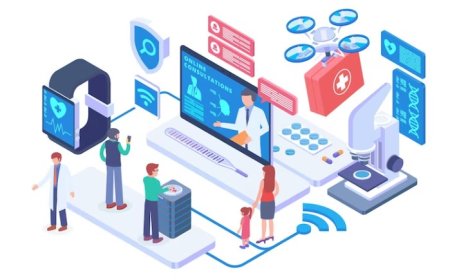Guide to Web Application Security
Learn web security, application protection, threats, vulnerabilities, best practices, encryption, authentication, tools, strategies, and cybersecurity.

Web application security refers to the practice of protecting web applications from potential threats and vulnerabilities that could compromise the confidentiality, integrity, and availability of the application and its underlying data. It involves implementing various security measures and best practices to mitigate risks and ensure the secure functioning of web applications in today's digital landscape. Effective web application security is essential to safeguard sensitive information, prevent unauthorized access, and maintain trust in online interactions.
Importance of web application security in today's digital landscape
-
Web applications are increasingly targeted by hackers due to their widespread usage and potential for exploiting vulnerabilities.
-
Breaches in web application security can lead to unauthorized access, data theft, financial loss, and reputational damage.
-
Web applications often handle sensitive information such as personal data, financial transactions, and confidential business data, making them attractive targets for cybercriminals.
-
Compliance with data protection regulations and industry standards requires robust web application security measures.
-
Users expect a secure online experience, and failure to provide adequate web application security can result in loss of customer trust and loyalty.
-
The evolving threat landscape and the emergence of new attack vectors necessitate continuous attention to web application security to stay ahead of potential risks.
The purpose of this blog post is to provide an overview of web application security, highlight its importance in today's digital landscape, and offer insights into best practices for securing web applications. By understanding the threats, vulnerabilities, and effective security measures, readers will gain knowledge and practical guidance to enhance the security posture of their web applications and protect sensitive data from potential breaches.
Common Web Application Security Threats
Web applications face various security threats that can compromise their integrity, confidentiality, and availability. Some common web application security threats include:
-
Attackers inject malicious scripts into web pages viewed by users, potentially leading to unauthorized data access or manipulation.
-
Attackers exploit vulnerabilities in web application databases by inserting malicious SQL code, allowing them to manipulate or extract sensitive data.
-
Attackers trick users into performing unintended actions on a web application by forging authenticated requests on their behalf.
-
Attackers steal or manipulate user session information to gain unauthorized access to web applications.
-
Attackers manipulate or bypass authorization controls to access sensitive resources directly, without proper validation or authorization.
-
Incorrectly configured web application components, servers, or frameworks can expose vulnerabilities and provide attackers with unauthorized access or sensitive information.
Understanding these common threats is crucial for organizations to implement effective security measures and safeguard their web applications against potential attacks.
Essential Principles of Web Application Security
To ensure robust web application security, it is essential to adhere to the following principles:
-
Developers should follow secure coding guidelines and best practices to prevent vulnerabilities in the application's codebase.
-
All user input should be validated and sanitized to prevent common attacks such as XSS and SQL injection.
-
Strong authentication methods and role-based access controls should be implemented to ensure that only authorized users can access sensitive functionalities and data.
-
Proper session management techniques, such as session timeouts and secure session storage, should be employed to mitigate the risk of session hijacking.
-
Keeping web application frameworks, libraries, and dependencies up to date helps address known vulnerabilities and security patches.
-
Enabling secure communication through HTTPS ensures the confidentiality and integrity of data transmitted between the web application and users.
-
WAFs provide an additional layer of protection by filtering and blocking malicious traffic, detecting suspicious activities, and mitigating attacks.
By adhering to these principles, organizations can strengthen their web application security posture and mitigate the risk of potential vulnerabilities and attacks.
Web application security testing
Web application security testing is an essential practice to identify and mitigate vulnerabilities and weaknesses in web applications. It involves various techniques and methodologies to assess the security posture of an application.
Manual code review is a thorough examination of the application's source code to uncover security flaws, coding errors, and vulnerabilities. This process requires expertise in secure coding practices and an understanding of common attack vectors.
Automated vulnerability scanning employs specialized tools to scan the application for known vulnerabilities, misconfigurations, and security weaknesses. These tools help identify potential vulnerabilities at scale and provide a comprehensive assessment of the application's security posture.
Penetration testing simulates real-world attacks on the application to identify vulnerabilities and assess its overall security. Skilled ethical hackers attempt to exploit weaknesses and gain unauthorized access to the application, providing valuable insights into potential security risks.
Integrating security testing throughout the software development life cycle (SDLC) ensures that security is considered at every stage of application development. By including security testing in requirements gathering, design, development, and deployment phases, organizations can identify and address security issues early on, reducing the risk of vulnerabilities making their way into production.
Best Practices for Web Application Security
-
Use secure coding practices, such as input validation and output encoding, to prevent common vulnerabilities like XSS and SQL injection.
-
Implement proper authentication and authorization mechanisms to control access to sensitive functionality and data.
-
Regularly update and patch software components, including frameworks and libraries, to address known vulnerabilities.
-
Enforce secure session management, including strong session IDs, session timeouts, and secure cookie handling.
-
Employ secure communication protocols (HTTPS) to encrypt data in transit and protect against eavesdropping.
-
Implement web application firewalls (WAFs) to monitor and filter incoming traffic, detecting and blocking malicious requests.
-
Conduct regular security testing, including manual code reviews, automated vulnerability scanning, and penetration testing.
-
Train developers and stakeholders on secure coding practices and web application security awareness.
-
Stay informed about the latest security threats and vulnerabilities, and keep up-to-date with industry best practices and standards.
-
Continuously monitor and log web application activities to detect and respond to potential security incidents in a timely manner.
Emerging Trends and Technologies in Web Application Security
As web application security continues to evolve, there are several emerging trends and technologies that organizations should consider:
DevSecOps:
The integration of security practices into the software development lifecycle, promoting collaboration between development, operations, and security teams to ensure secure coding and continuous security testing.
API Security:
With the increasing use of APIs for interconnecting systems and services, organizations need to address potential vulnerabilities and implement proper authentication, authorization, and input validation mechanisms.
Serverless Architecture:
The adoption of serverless computing introduces new security considerations, including securing serverless functions, managing permissions, and protecting sensitive data within the serverless environment.
Machine Learning and AI-driven Security:
Leveraging machine learning and AI technologies can enhance web application security by enabling proactive threat detection, anomaly detection, and real-time response to emerging threats.By keeping up with these emerging trends and technologies, organizations can enhance their web application security posture and stay ahead of evolving threats. Web application security plays a critical role in safeguarding organizations' digital assets and protecting sensitive data from various threats. It is essential to prioritize and invest in robust security measures to mitigate risks effectively.
Key takeaways for organizations to enhance their web application security practices include implementing secure coding practices, validating and sanitizing input data, enforcing proper authentication and authorization mechanisms, and regularly updating software components. Additionally, employing secure session management, implementing secure communication (HTTPS), and leveraging web application firewalls (WAFs) are crucial.
Looking ahead, the landscape of web application security will continue to evolve with emerging technologies and trends. Organizations should consider incorporating DevSecOps practices, addressing API security challenges, managing security in serverless architectures, and leveraging machine learning and AI-driven security solutions. Staying vigilant, adapting to new threats, and continuously improving security measures will be vital to maintaining robust web application security in the future.





































